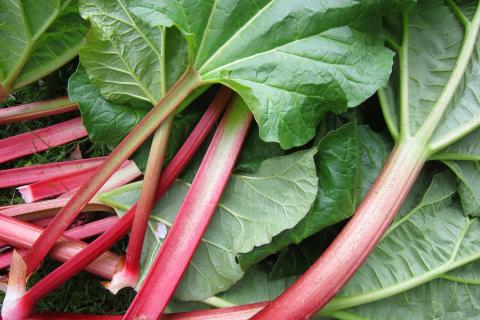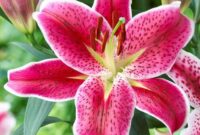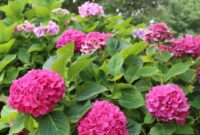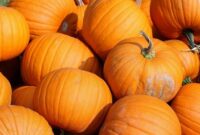What grows for 10 years or more, suffers from almost from no pests, and is refreshingly easy to grow? It’s rhubarb! This perennial vegetable has tart-flavored ruby stems used to make pies, crumbles, jams, and sauces. Plant in late autumn or early spring when the soil is workable. Learn everything you need to know to grow and care for your own rhubarb.
About Rhubarb
Rhubarb originally came from Asia. It was brought to Europe in the 1600s and to America not long thereafter. It thrives in areas with a cooler climate, making it popular in northern gardens. Rhubarb is easy to grow, but needs a dormancy period to really thrive and produce an abundance of huge stalks.
The stalks are the only edible part of the rhubarb plant. These have a rich, tart flavor when cooked. The leaves of the rhubarb plant are toxic—they contain an irritant called oxalic acid—so be sure that they are not ingested.
What’s wonderful about rhubarb is that it’s a perennial: It will produce for many years—five or more. For that reason, rhubarb should be planted in its own space in any corner of the garden where it can grow undisturbed. Rhubarb grows well in soil amended with plenty of well-rotted manure or compost; this has inspired some gardeners to just go ahead and plant it near their compost piles!
With its ruby stems and umbrella-like leaves, rhubarb also adds height and structure to your garden along with a splash of gorgeous colour that will return year in year out.
When to Plant Rhubarb
Rhubarb can be planted in late fall OR early spring.
- In fall, plant rhubarb crowns after dormancy has set in, and you’ll have rhubarb cropping in the spring!
- In spring, plant crowns as the soil is workable and when the roots are still dormant and before growth begins (or as plants are just beginning to leaf out). If you have a temperature gauge, soil temperature should be 50 degrees F minimum.
You’ll want to plantn “one-year-old rhubarb crowns” which you find at a garden nursery or order online. Rhubarb can be grown from seed, but this is not recommended. It takes several years for rhubarb plants to be mature enough to produce a good harvest.

Choosing and Preparing the Planting Site
- Rhubarb grows best in full sun, but will tolerate partial shade.
- Choose a site with soil that is well-draining and fertile. Good drainage is essential, as rhubarb will rot if kept too wet.
- Mix compost, rotted manure, or anything high in organic matter into the soil. Rhubarb plants are heavy feeders and need this organic matter. Learn more about soil amendments and preparing soil for planting.
- Soil pH is not critical, though rhubarb will grow best in a slightly acidic to neutral range (6.0–7.0).
- Rhubarb gets big! It can grow to 2 to 3 feet tall and wide. Make sure you choose a site where it won’t be crowded.
- Rhubarb does best where the average temperature falls below 40ºF (4°C) in the winter and below 75ºF (24°C) in the summer.
- Before planting, eliminate all perennial weeds in the planting site.
How to Plant Rhubarb
- Dig large, bushel-basket–size holes.
- Space rhubarb plants about 2 to 4 feet apart and 3 to 4 feet between rows.
- Plant crowns so the eyes are about 2 inches below the soil surface with buds facing up.
- Water well at the time of planting.
Check out this video to learn more about how to plant rhubarb:
How to Grow Rhubarb
- Mulch generously with a heavy layer of straw to retain moisture and discourage weeds.
- Water your plant well and consistently. Rhubarb needs sufficient moisture, especially during the hot, dry days of summer.
- Remove seed stalks as soon as they appear, as they will only drain energy from the plant that could otherwise be used for producing stalks or roots.
- Each spring, apply a light sprinkling of a fertilizer (10-10-10) when the ground is thawing or has just thawed. See your local frost dates.
- Overcrowding is common problem with rhubarb and can lead to subpar growth. Dig and split rhubarb roots every 3 to 4 years. Divide when plants are dormant in early spring (or late fall). Divisions should have at least one large bud on them.
- In the fall, remove all plant debris. Once your ground freezes, it’s best to cover rhubarb with 2 to 4 inches of an organic mulch, preferably well-rotted compost. By adding nitrogen to the soil, you’re preparing the rhubarb plants for a good spring season.
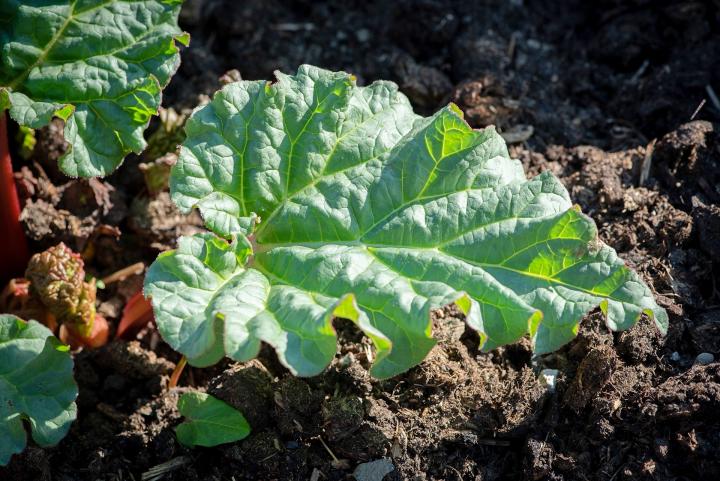
Pests and diseases are rarely an issue with rhubarb, but they may be affected by:
- Crown rot
- Rhubarb curculio (a beetle)
- ‘Canada Red’
- ‘Cherry Red’
- ‘Crimson Red’
- ‘MacDonald’
- ‘Valentine’
- ‘Victoria’
How to Harvest Rhubarb
- Do not harvest any stalks during the first growing season, and harvest sparingly in the second year. This allows your plants to become properly established.
- Usually after a plant’s third year, the harvest period runs 8 to 10 weeks long, lasting through mid-summer.
- Harvest stalks when they are 12 to 18 inches long and at least 3/4-inch in diameter. If the stalks become thin, stop harvesting; this means the plant’s food reserves are low.
- Grab the base of the stalk and pull it away from the plant with a gentle twist. If this doesn’t work, you can cut the stalk at the base with a sharp knife. To prevent the spread of disease, be sure to sanitize the knife before cutting. Discard the leaves.
- Always leave at least 2 stalks per plant to ensure continued production. You may have a bountiful harvest for up to 20 years without having to replace your rhubarb plants.
- It was once believed that the entire rhubarb plant becomes toxic as summer temperatures rose. This isn’t true, although summer-harvested stalks usually have a tougher texture than those picked in the spring. Nevertheless, after mid-summer, it’s best to leave stalks on the plant to allow them to gather energy for next year’s growth.
Rhubarb has many other uses, from medicinal to cosmetic. See how to naturally lighten your hair with rhubarb.
Check out our list of best rhubarb recipes to put your fresh rhubarb to good use! Plus, learn how to make a rhubarb tonic.

